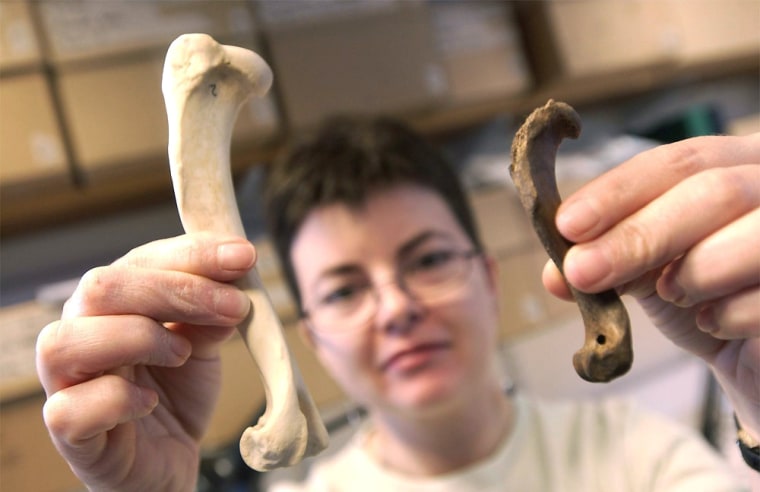Corgis, the little dogs with the short legs, may have a long royal history.
Archaeologists from Cardiff University said Wednesday that ninth century bones unearthed in Wales may be those of the first Welsh corgi to be kept as a royal pet.
They have been analyzing bones found at an ancient royal dwelling in a bog in the Brecon Beacons, a hilly area of southern Wales.
“We have the foreleg of a corgi-sized dog, which, dare we suggest, might be a much-favored ancestral royal companion,” said Alan Mulville, of the university’s School of History and Archaeology, who is leading the study.
Britain’s current monarch, Queen Elizabeth II, got her first corgi as an 18th birthday present in 1944 and is a well-known lover of the breed. Her mother, the late Queen Mother Elizabeth, also had corgis.
Experts believe the crannog — a lake or bog dwelling built on stilts or a man-made island — at Llangorse Lake was the royal residence for the Welsh kingdom of Brycheiniog, dating from around A.D. 890. Tree ring dating of oak planks from the crannog indicate that it was built between 889 and 893.
Crannogs are normally associated with Scotland and Ireland, and the Llangorse crannog is the first to be discovered in Wales.
“Our analysis of the types of animals eaten, the parts which were eaten and how old they were when they were eaten suggests high status, even a kingly diet, which possibly makes the crannog one of Wales’ earliest royal residences,” said Mulville.
The archaeologists have asked the Welsh Corgi Club to help them test the find against those of more recent corgi skeletons.
“Not surprisingly,” said Mulville, “the club is rather excited at the prospect of 1,200-year-old evidence of the breed’s royal association.”
Sylvia Hughes, the club’s honorary secretary, said she always believed the breed had royal links dating back hundreds of years.
“It has been rumored for some time that there were always royal links, but it was good to hear the news,” said Hughes, who has owned corgis for almost 50 years.
The sturdy, short-legged breed originally was used to herd animals. “Corgi” is the Gaelic word for “dog.”
Queen Elizabeth II is often accompanied on walks by a pack of the dogs, some of which she has bred herself. The queen also has owned “dorgis” — crosses of corgis and the late Princess Margaret’s dachshund.
